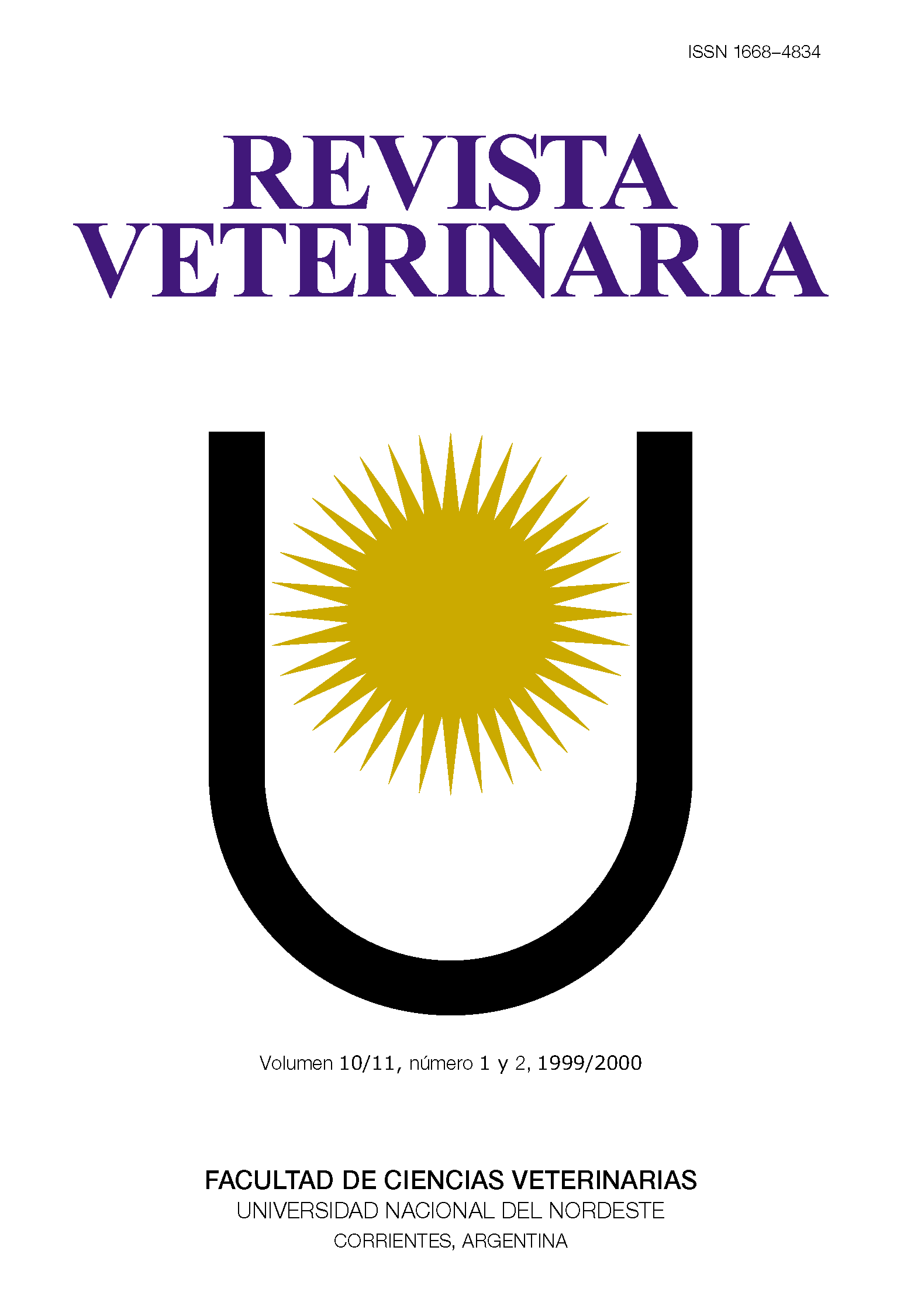Physiological variation of enzymatic activities in blood of bullfrog, Rana catesbeiana (Shaw, 1802)
DOI:
https://doi.org/10.30972/vet.121%20y%202674Palabras clave:
rana catesbeiana, plasma enzymes, physiological variations.Resumen
The aim of this study was to determine plasma enzymogram reference values in bullfrog, Rana catesbeiana, to correlate them with physiological modifications attributable to sex, age, weight, climate, and breeding and feeding systems. For this purpose, three hundred and two healthy animals (from 9 to 21 months–old, both sexes) were used. Reference intervals for alkaline phosphatase, ALP (157±32 IU/L), alanine aminotransferase, ALT (12.4±2.6 IU/L), aspartate aminotransferase, AST (48.1±9.3 IU/L), gammaglutamyl transferase, GGT (9.2±1.6 IU/L), lactate dehydrogenase, LDH (117±22 IU/L), butyryl cholinesterase, CHE (168±32 IU/L) and creatine phosphokinase, CPK (432±85 IU/L), were obtained. Growth showed a correlation to weight increase (r =0.82, p =0.02). Significant lineal association between the age increment and ALP decrease (9 months = 196 versus 21 months = 102 IU/L), as well as the increases of CHE (126 versus 226 IU/L) and CPK (280 versus 572 IU/L), were registered. ALP and CPK were higher in males than females (p<0.05). Except GGT, enzymatic activities were higher in winter than on the other seasons. ALP, AST, GGT and LDH values were significantly higher when water covered 90% of the tank floor and food was administered as floating pellets. On the contrary, values were low when water covered only 25% of the tank and pellets were given on the floor. The highest values on hepatic strain marker enzymes (ALP, ALT, AST, GGT and LDH) were registered in frogs which have eaten bovine lung, with or without balanced pellets, and the lowest ones were verified on animals fed naturally in a lagoon. The usefulness of enzymogram to evaluate sanitary, metabolic, and nutritional state is proposed, while its application as suitable tool to improve frog meat production is emphasized.Descargas
Descargas
Publicado
Cómo citar
Número
Sección
Licencia
Derechos de autor 2001 J. A. Coppo, N. B. Mussart, S. A. Fioranelli

Esta obra está bajo una licencia internacional Creative Commons Atribución-NoComercial 4.0.
Política de acceso abierto
Esta revista proporciona un acceso abierto inmediato a su contenido, basado en el principio de que ofrecer al público un acceso libre a las investigaciones ayuda a un mayor intercambio global de conocimiento. La publicación por parte de terceros será autorizada por Revista Veterinaria toda vez que se la reconozca debidamente y en forma explícita como lugar de publicación del original.
Esta obra está bajo una licencia de Creative Commons Reconocimiento-NoComercial 4.0 Internacional (CC BY-NC 4.0)










.jpg)
.jpg)



